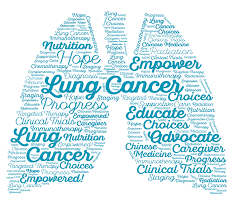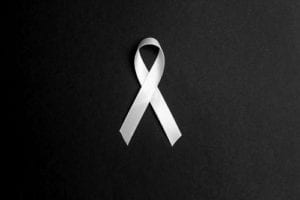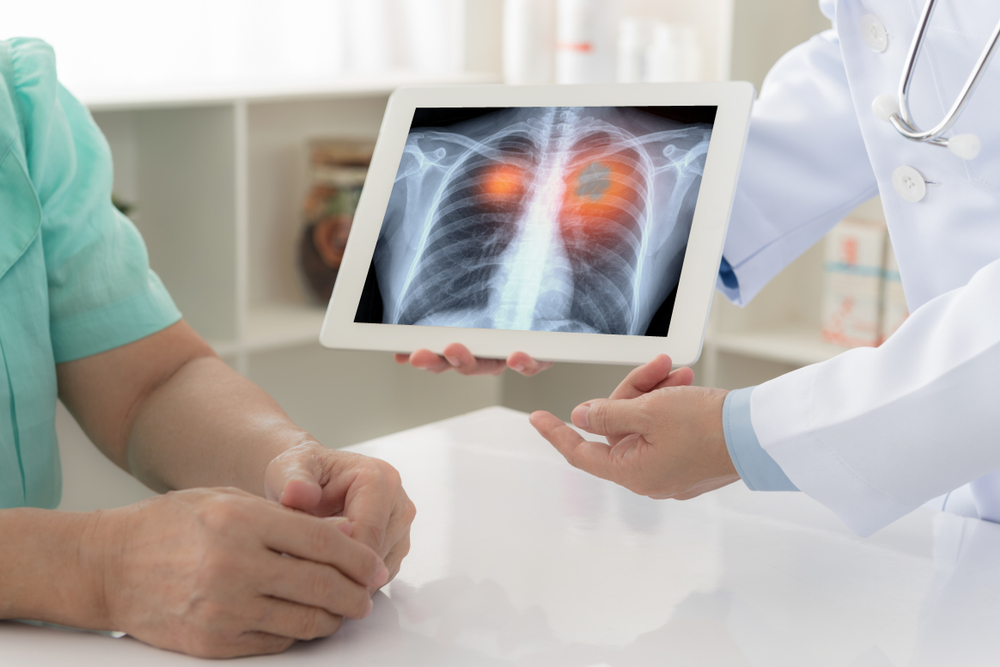September 11th and Lung Cancer – Malignant Neoplasm of Bronchus and Lung

The 9/11 dust caused lung cancer in countless first responders, downtown workers, residents, and other people exposed in lower Manhattan on 9/11 and during the many months after. Lung and other cancers in the 9/11 exposed population are linked to the exposure to many carcinogenic agents near the WTC, including arsenic, asbestos, beryllium, cadmium, chromium, nickel, silica dust, and soot. A decade after the attack, scientists released information about what was in that plume, including jet fuel, building materials, asbestos, and other toxic ingredients.
In 2012, over a decade after the attacks, Dr. John Howard from the CDC confirmed the link between 9/11 dust/fumes and lung cancer based on the well-accepted medical studies showing that the respiratory tract is a major site for acute and chronic toxicity resulting from WTC-exposures, including interstitial lung disease, chronic respiratory disorder, reactive airways disease syndrome (RADS) and chronic cough syndrome. Now today, almost 20 years after the 9/11 attacks, lung cancer is the fifth most common cancer certified by the WTC Health Program as caused by the 9/11 dust and fumes.
If you were exposed to World Trade Center dust and now you have received this diagnosis, federal funding can compensate you for the expenses and impacts of your illness. An experienced 9/11 Victim Compensation Fund lawyer could help you understand how to obtain that funding.
What Is Malignant Neoplasm of Bronchus and Lung?
The term “malignant neoplasm” refers to a malignant cancerous growth. A malignant neoplasm of the bronchus and lung, also known as bronchogenic carcinoma or lung cancer, is a malignant cancer that originates in the bronchi, bronchioles, or other parts of the lung. The cancer begins when the cells of the lung begin to mutate. Instead of dying off as they should, these abnormal cells continue to reproduce and form tumors.
While lung cancer is most commonly caused by smoking, other factors that increase one’s likelihood of developing a malignant neoplasm of the bronchus and lung include radon exposure, as well as exposure to hazardous chemicals including asbestos, cadmium, chromium, and petroleum products, such as 9/11 survivors and first responders breathed in after the terrorist attacks.
The lungs are two sponge-like structures in the chest. The right lung has three lobes, while the left lung has two. The left lung is smaller to accommodate for the space that the heart needs within the body.
When a person breathes in, the air enters the body through the mouth or nose and travels to the lungs through the trachea, also known as the windpipe. The trachea divides into tubes called the bronchi, which enter the lungs and divide into smaller bronchi and smaller branches known as bronchioles. At the end of the bronchioles, tiny air sacs known as alveoli absorb oxygen into the blood from the inhaled air and release carbon dioxide from the blood upon exhalation of air. Lung cancer most commonly starts in the lining of the bronchi, the bronchioles, or alveoli.
Symptoms of Lung Cancer
Lung cancer often does not present symptoms until it is in the later stages. Some of the symptoms of lung cancer include:
- A persistent or worsening cough.
- Shortness of breath.
- Loss of appetite or unexplained weight loss.
- Wheezing.
- Coughing up blood and/or mucus. This sputum is often red or rust-colored.
- A chest pain that worsens when breathing deeply, coughing, or laughing.
- Weakness or fatigue.
- Frequent or persistent attacks of bronchitis or pneumonia.
How Lung Cancer Is Diagnosed
 If you are over 55, have risk factors for this type of cancer, or exhibit symptoms of it, your doctor may recommend a lung cancer screening that consists of:
If you are over 55, have risk factors for this type of cancer, or exhibit symptoms of it, your doctor may recommend a lung cancer screening that consists of:
- Imaging tests, including X-rays of the chest that can be used to detect an abnormal mass or nodule, and a CT scan that can provide a more detailed view, showing small lesions in the lung. In some cases, a stronger MRI scan will help determine if the cancer has spread to the brain or spinal cord. A combination PET and CT scan can also determine if the cancer has spread to other organs such as the liver, bones, and adrenal glands.
- Bronchoscopy, which is used to find tumors or blockages in the larger airways of the lungs. Often, a biopsy will be performed during this procedure.
- A CT-guided needle biopsy, if the cancer is located deep within the body. The CT is used to guide the needle to the affected area, where a tissue sample is then taken.
- A needle biopsy using fine-needle aspiration, in which a thin, hollow needle is inserted into the affected area to withdraw or aspirate cells and small fragments of tissue. This test is especially useful when determining if there is cancer in the lymph nodes between the lungs.
- Sputum cytology, which is a study of mucus samples taken when coughing. These samples are looked at through a microscope to check for cancerous cells.
- Thoracentesis, which is a test that involves removing a sample of fluid buildup around the lungs to determine if it is caused by cancer in the pleura, which is the lining of the lungs, or is the result of another condition.
- Thoracoscopy, which is used to determine if the cancer has spread to the spaces between the lungs and the chest wall.
- Lung function tests performed after diagnosis to determine how well the lungs are currently working. This is an important consideration if surgery is an available treatment option.
Types of Lung Cancer
There are two main types of lung cancer, including:
- Non-small cell lung cancer: This is the most common type of lung cancer, involving 80-85 percent of lung cancer cases, including adenocarcinoma, squamous cell carcinoma, and large cell carcinoma. While each of these cancers is slightly different, they are categorized as non-small cell lung cancers as the treatment options and prognosis are the same.
- Small cell lung cancer: Around 10-15 percent of new cancer diagnoses are small cell lung cancer, which is a more aggressive form of cancer than non-small cell lung cancer. Around 70 percent of small cell lung cancers will not be diagnosed until after they have spread to other parts of the body. While this form of cancer tends to respond well to chemotherapy and radiation, the cancer will recur in many people.
Stages of Lung Cancer
The treatment options that are available and commonly used for lung cancer depend on the stage of the disease’s progression. Lung cancer is typically diagnosed in “stages” depending on how much the cancer has spread.
The stages include:
- Stage 1: Cancer is found inside the lung, but has not spread to the lymph nodes and other body systems.
- Stage 2: Cancer is found inside the lung and in nearby lymph nodes.
- Stage 3: Cancer is in the lungs and lymph nodes in the middle of the chest.
- Stage 3A: Cancer is found in the lymph nodes, but only on the same side of the chest where the cancer originally appeared.
- Stage 3B: Cancer has spread to lymph nodes on the opposite side of the chest from where it originated, or to the lymph nodes just above the collar bone.
- Stage 4: Cancer has spread to both lungs, the area around the lungs, or distant organs.
Lung Cancer Treatment Options
There are several treatment options available for treating lung cancer, such as:
- Surgery: In some cases, particularly when the cancer has not spread to other organs, it is possible to remove the cancerous part of the lung as well as a margin of tissue around it. A lobectomy involves removing a whole lobe of the lung. Because it is possible to live with only one lung, a pneumonectomy (which is the removal of an entire lung) is recommended for some patients.
- Chemotherapy: In this type of treatment, powerful drugs are administered intravenously or orally over many weeks or months to destroy the cancer cells.
- Radiation: This treatment option uses high-energy radiation beams targeted to a specific area to destroy cancer cells in that area. This treatment is often used to shrink tumors before surgery as well as to destroy remaining cancer cells after the surgery.
Seeking Funding After Your 9/11-Related Lung Cancer Diagnosis
The World Trade Center (WTC) Health Program is a federally funded program that provides health care services and monitoring for those who have been diagnosed with a condition related to exposure to toxins at Ground Zero and other areas that were subjected to terrorism on September 11, 2001.
Another program, known as the September 11th Victim Compensation Fund (VCF), provides compensation for any individual who was physically harmed as a result of the terrorist attacks or to the loved ones of those physically harmed in the attacks. This includes individuals who have a 9/11-related medical condition that has been certified by the WTC Health Program, including lung cancer.
To seek compensation through the VCF, you must complete three steps:
- Register with the VCF by your applicable registration deadline. Registering with the VCF is not the same as filing a claim, but it reserves your right to file a claim in the future. If you were certified by the WTC Health Program with a 9/11-related condition before July 29, 2019, you must register by July 29, 2021. Those who were certified after that date have two years after the certification to register with the VCF. If you are pursuing compensation due to the death of a loved one who died of a 9/11-related medical condition before July 29, 2019, you must register by July 29, 2021. If your loved one died of a 9/11-related medical condition after that date, you must register within two years after the date of death.
- If you have not done so already, get certified by the WTC Health Program for a physical health condition. The WTC Health Program covers first responders or rescue-and-recovery workers (either paid or volunteer), PLUS non-first responders who were downtown on 9/11 PLUS anyone who lived, worked, or attended daycare or school in the affected area on September 11, 2001, until July 31, 2002. Malignant neoplasm of the bronchus and lung is one of the eligible conditions for lifetime care under the WTC Health Program.
- File your claim and supporting documentation with the VCF by October 1, 2090, which is now the filing deadline since the fund was reauthorized in 2019. The WTC Health Program was recently authorized until 2090, meaning that if you are not ready to certify your condition after registering with the VCF, you can take your time doing so.
Some of the supporting documentation you will need when you file a claim with VCF includes:
- Proof of presence at a qualifying area from September 11, 2001, to May 30, 2002. This can include school, work, or daycare records, or even testimony from those who can verify that you were there, but most often requires two detailed affidavits that support your claim. Without properly drafted affidavits, a claim will likely be denied.
- Authorization of the release of medical records so that the fund administrators can obtain records about your certified condition from the WTC Health Program.
- A signature page that allows the fund administrators to contact your union or past employer, or the workers’ compensation program. This signature page also waives your right to file a lawsuit for compensation related to your 9/11-associated injuries.
You will need to provide other documents depending on whether you are filing a Victim Compensation Fund or World Trade Center Health Program claim. Your attorney will advise you of the documents necessary for your claim.
Let a Dedicated September 11 Lawyer Help You
 If you suffered lung cancer as a result of exposure to toxic World Trade Center dust or your loved one died of this devastating condition, a 9/11 compensation attorney can help you understand these two federal programs and whether you qualify for assistance, including health care and monitoring as well as a tax-free cash award to compensate you for the impacts that your illness has had on your life.
If you suffered lung cancer as a result of exposure to toxic World Trade Center dust or your loved one died of this devastating condition, a 9/11 compensation attorney can help you understand these two federal programs and whether you qualify for assistance, including health care and monitoring as well as a tax-free cash award to compensate you for the impacts that your illness has had on your life.
For a case evaluation, contact a September 11th attorney at Hansen & Rosasco, LLP, today for more information.


